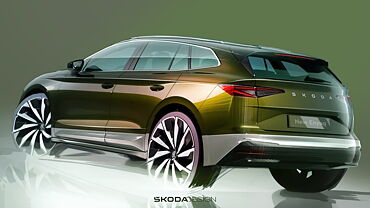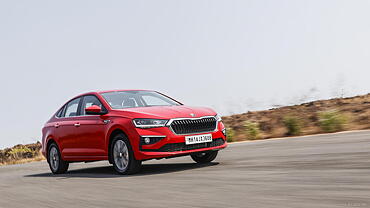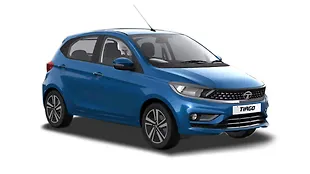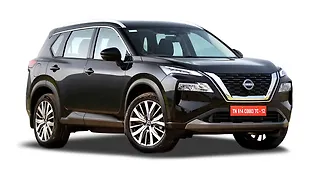
The age of shift-and-go is finally coming to India and it is growing in a small but positive way. Across the table more and more manufacturers are starting to offer automatic petrol options for those who drive less and want maximum ease, which in this case is the advantage offered by a two-pedal setup. It is basically a growing section and its look like everyone wants in.
Now it is all well and good when the biggest players have presence in a section of the market. But what if you don’t want one of their cars and would like to go for something equally priced, but a bit more unique. Well cue in the Nissan Micra and the Honda Brio. Both have been around for a while but not achieved the kind of success that Hyundai or Maruti Suzuki have managed. With the competition moving forward, these hatchbacks have taken a backseat in terms of keeping up but still seem like relevant options. To see what they have on offer, we have decided to pit them against the much more established Hyundai Grand i10. And here is our take on the highs and lows of this trio.
Exterior
The Micra was updated in 2013, the Brio in 2016 and now the Grand i10 in February of this year and clearly the ages show in the design. The Micra has always been a stand out because of its quirky appearance. Surprisingly, it is the Grand i10 which comes in second place. Despite its update, the i10 doesn’t have the aggressive appearance of the Brio, which got sporty bits added to its face during its 2016 update, even if they were slightly chrome loaded. The Micra is the largest of the lot in terms of size sitting just 100mm below the likes of the Honda Jazz and Elite i20. It also has the largest wheelbase among the trio.
Interior
In our comparison, we have taken into account the Brio in the top-spec VX AT trim, the Micra in the XV CVT trim and the Grand i10 in the mid-level Sportz AT trim, because there is no top-of-the-line petrol AT trim offered for the hatchback as yet. The Brio lags behind as it offers neither a touchscreen nor a climate control system, both of which are considered ‘premium’ options in this part of the market. In fact, the only major advantage it has over its rivals is that it offers cup holders at the rear.
The fight here then is between the Micra and the Grand i10. For the former, the selling points are a fully automatic climatic control system, cabin space and of course, the new bits like the rain sensing wipers, as well as follow me home headlamps. The Grand i10, while not having the special wipers or automatic head lamps, does offer this variant with a five inch touchscreen infotainment system which also has a reverse camera. Additionally, you also get rear AC vents – a feature that was brought to this part of the market by Grand i10 in 2013.
Performance
Here is where the main focus of the game comes in. All three cars gets 1.2-litre engines with two of them in four-cylinder setups and the Micra in a three cylinder setup. The Brio is the most powerful, as its engine produces 87bhp and 109Nm of torque while the Grand i10 engine produces 81bhp and 114Nm of torque. The Nissan Micra rounds off the back of the pack with 76bhp and 104Nm. Looking at the bigger picture, we can see that the Brio is actually the most powerful and complementing this power is a traditional torque converter with five-speeds.
It’s a similar story in the Grand i10 too, but this time around, it’s a four-speed unit which has been around for a while now. Reports suggest that Hyundai is working on an AMT setup and this will replace the four-speed unit but there are no clear details on the timeline of this move.
Finally the Micra get a CVT setup and while it has the lowest output, it does have the highest ARAI efficiency of 19.34kmpl and is followed in second and third place by the Grand i10 with 17.49kmpl and Brio with 16.5kmpl.
Conclusion
There is a sense of anticipation during these next few months as it is now common knowledge that the segment leader in this part of the market, the Maruti Suzuki Swift, will be offered with an AT option for the first time when the next generation is launched. This will pretty much blow the competition away, irrespective of the fact that the Swift is expected to get an AMT which while being efficient and slick, is not likely to offer the driving pleasure of the Micra’s box or even the Brio. Our trio here then will have to cover much ground in these next few months before their game becomes harder.

![Nissan Micra [2013-2018] Image Nissan Micra [2013-2018] Image](https://imgd.aeplcdn.com/272x153/cw/ec/10636/Nissan-Micra-Exterior-98190.jpg?wm=0&q=80)















![Nissan Micra [2013-2018] Exterior Nissan Micra [2013-2018] Exterior](https://imgd.aeplcdn.com/199x112/cw/ec/10636/Nissan-Micra-Exterior-98190.jpg?v=201711021421&q=80)
![Nissan Micra [2013-2018] Right Front Three Quarter Nissan Micra [2013-2018] Right Front Three Quarter](https://imgd.aeplcdn.com/199x112/ec/02/d3/10636/img/m/Nissan-Micra-Right-Front-Three-Quarter-48988_ol.jpg?v=201711021421&q=80)
![Nissan Micra [2013-2018] Right Front Three Quarter Nissan Micra [2013-2018] Right Front Three Quarter](https://imgd.aeplcdn.com/199x112/ec/02/D3/10636/img/l/Nissan-Micra-Facelift-Right-Front-Three-Quater-17846.jpg?v=201711021421&q=80)
![Nissan Micra [2013-2018] Steering Wheel Nissan Micra [2013-2018] Steering Wheel](https://imgd.aeplcdn.com/199x112/ec/02/D3/10636/img/l/Nissan-Micra-Steering-Wheel-17750.jpg?v=201711021421&q=80)
![Nissan Micra [2013-2018] Music System Nissan Micra [2013-2018] Music System](https://imgd.aeplcdn.com/468x263/ec/02/D3/10636/img/l/Nissan-Micra-Music-System-17752.jpg?v=201711021421&q=80)



























